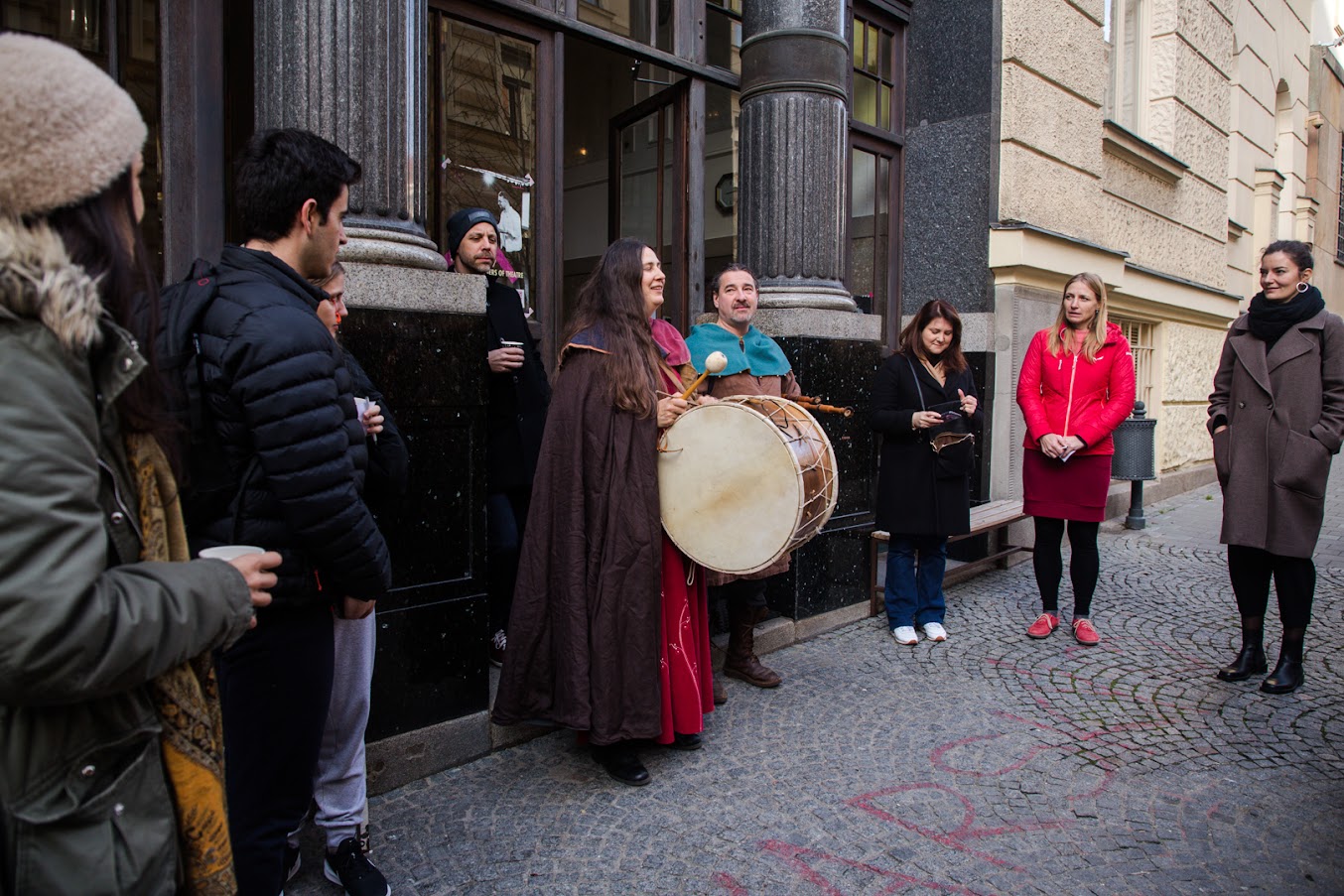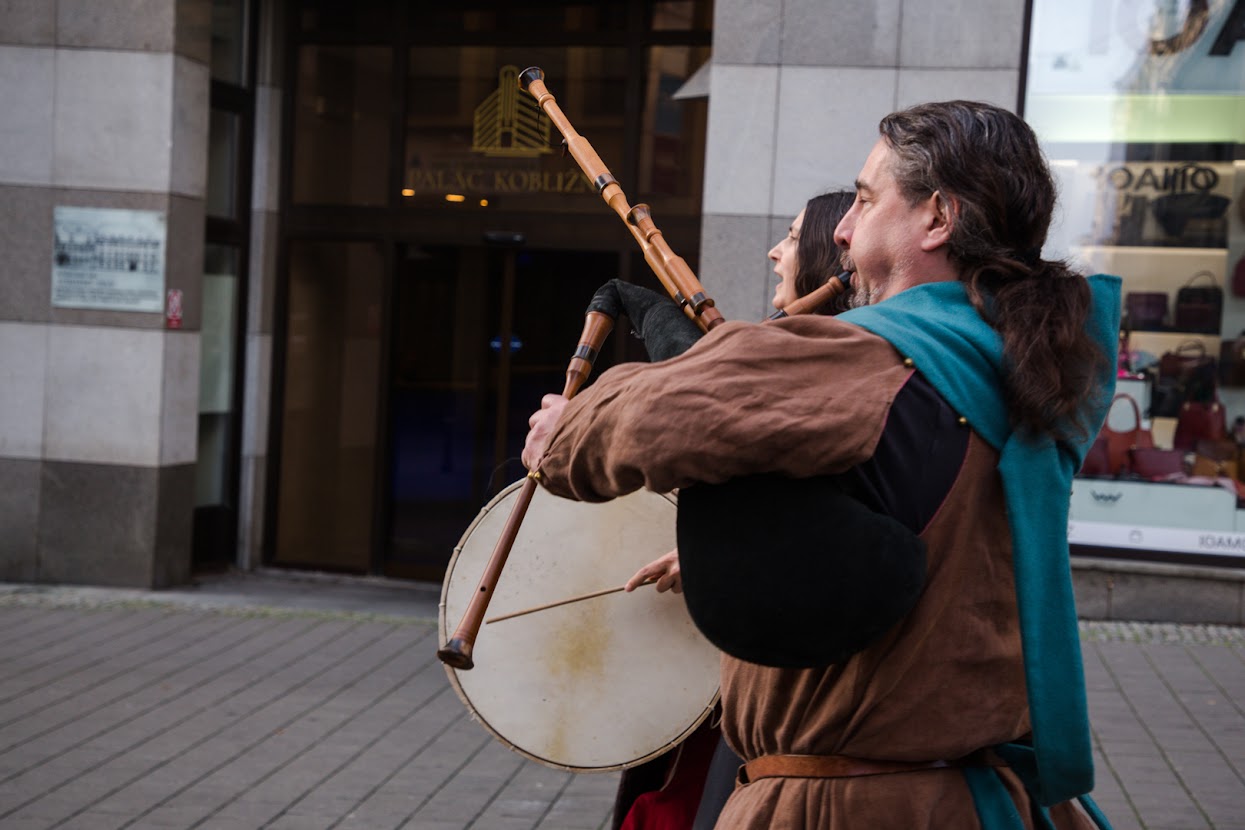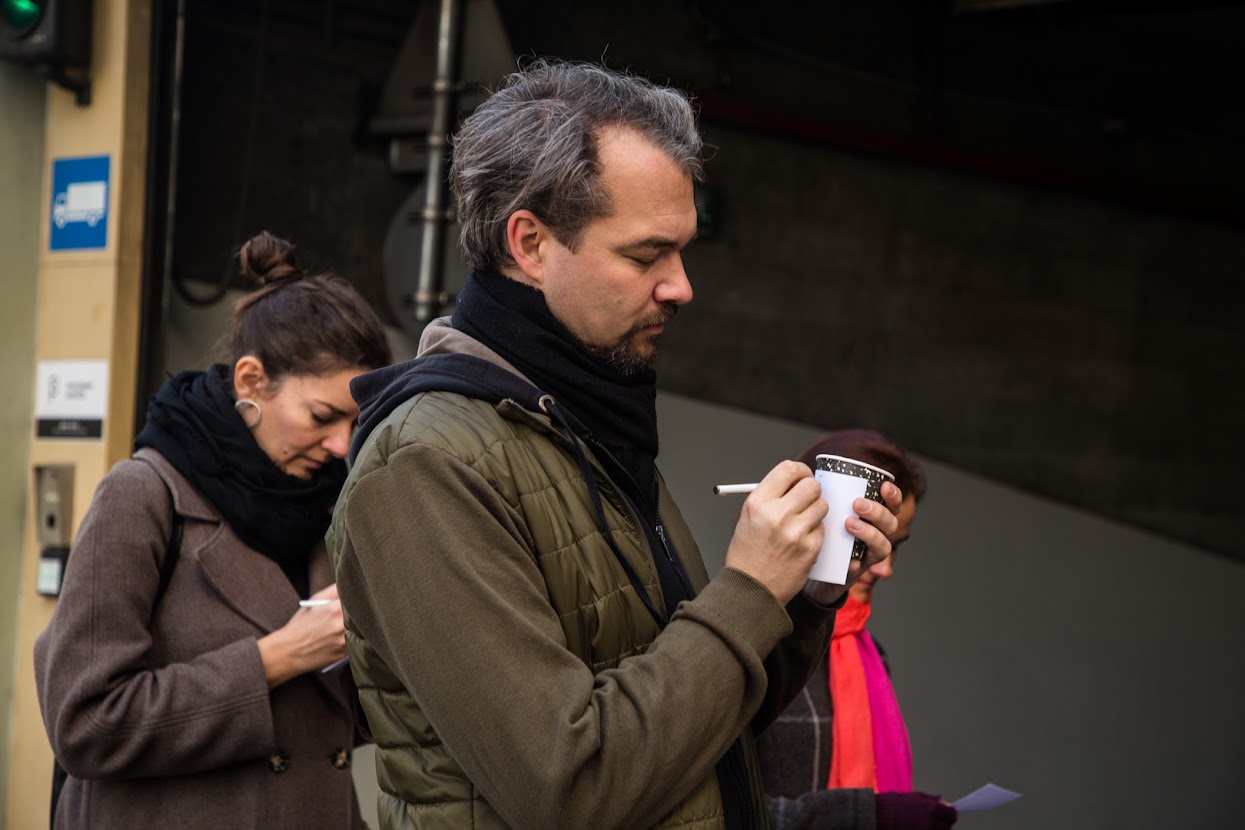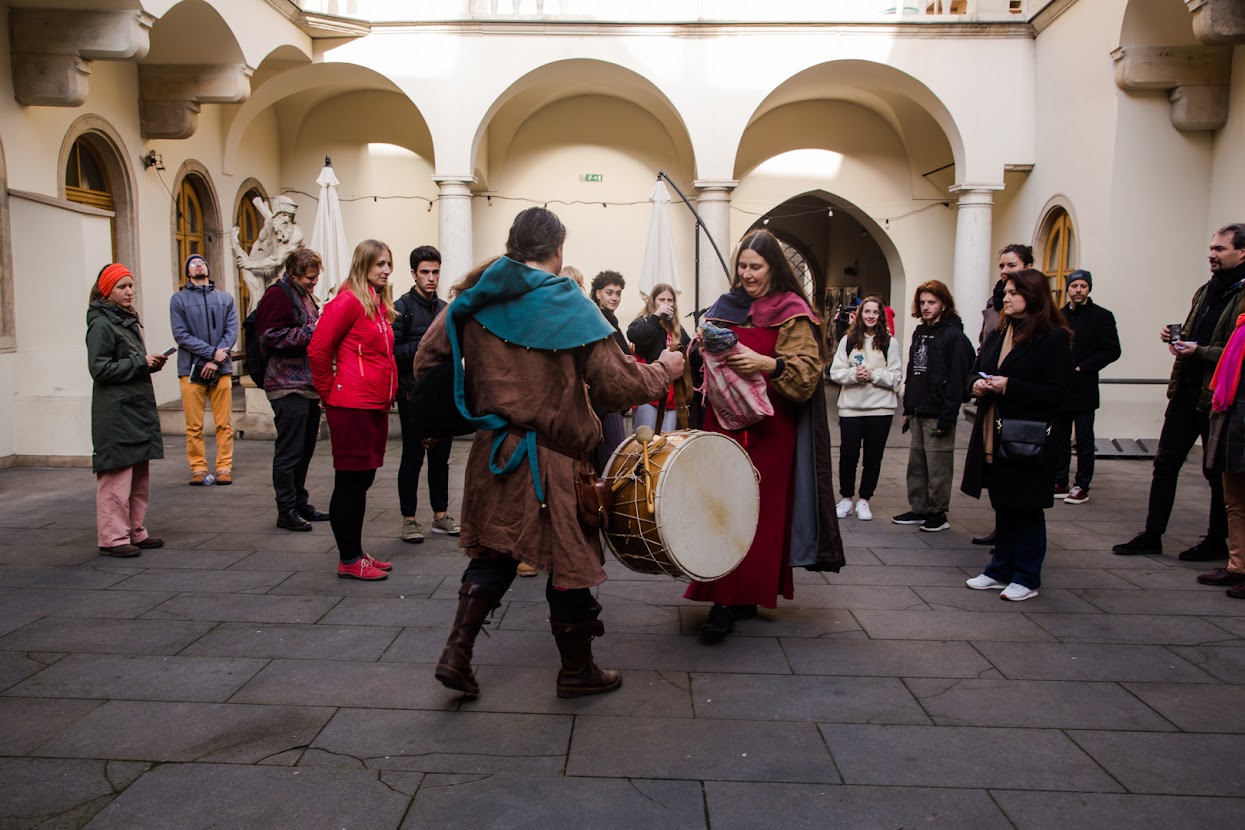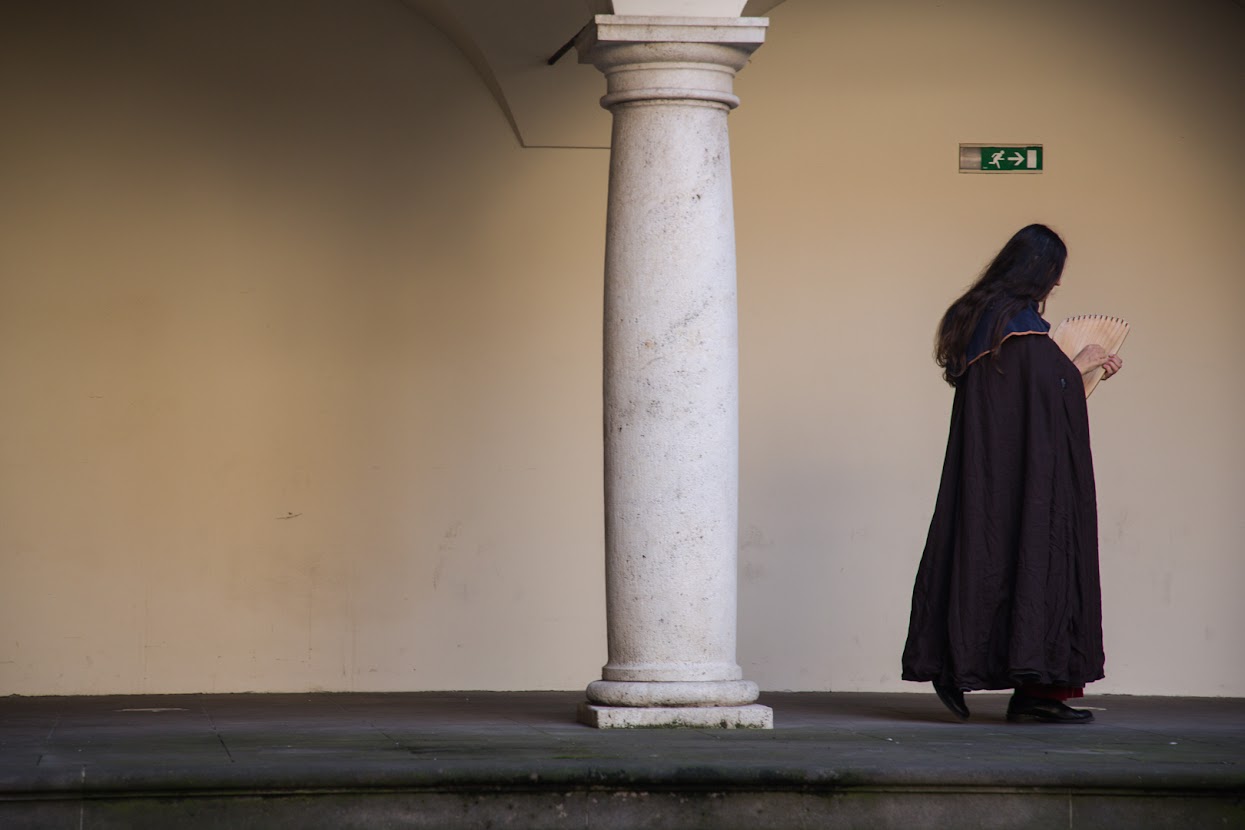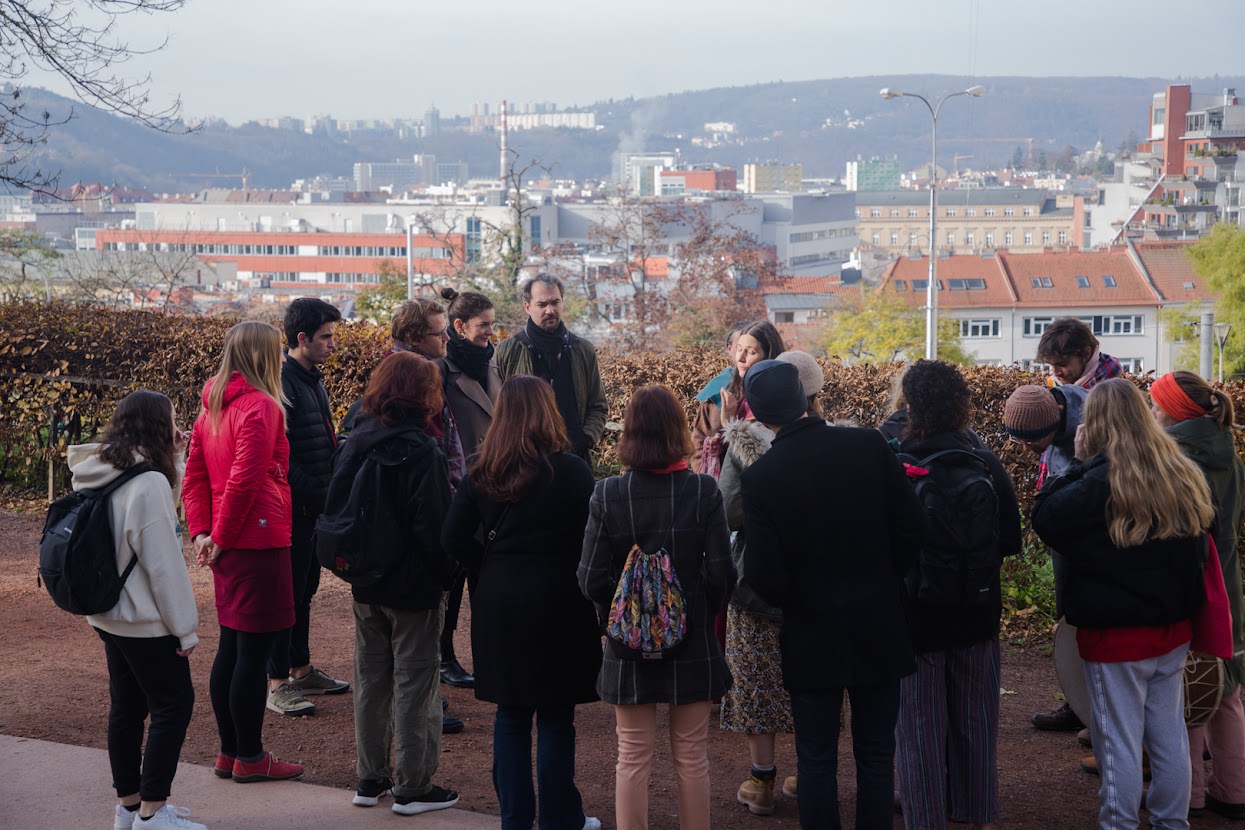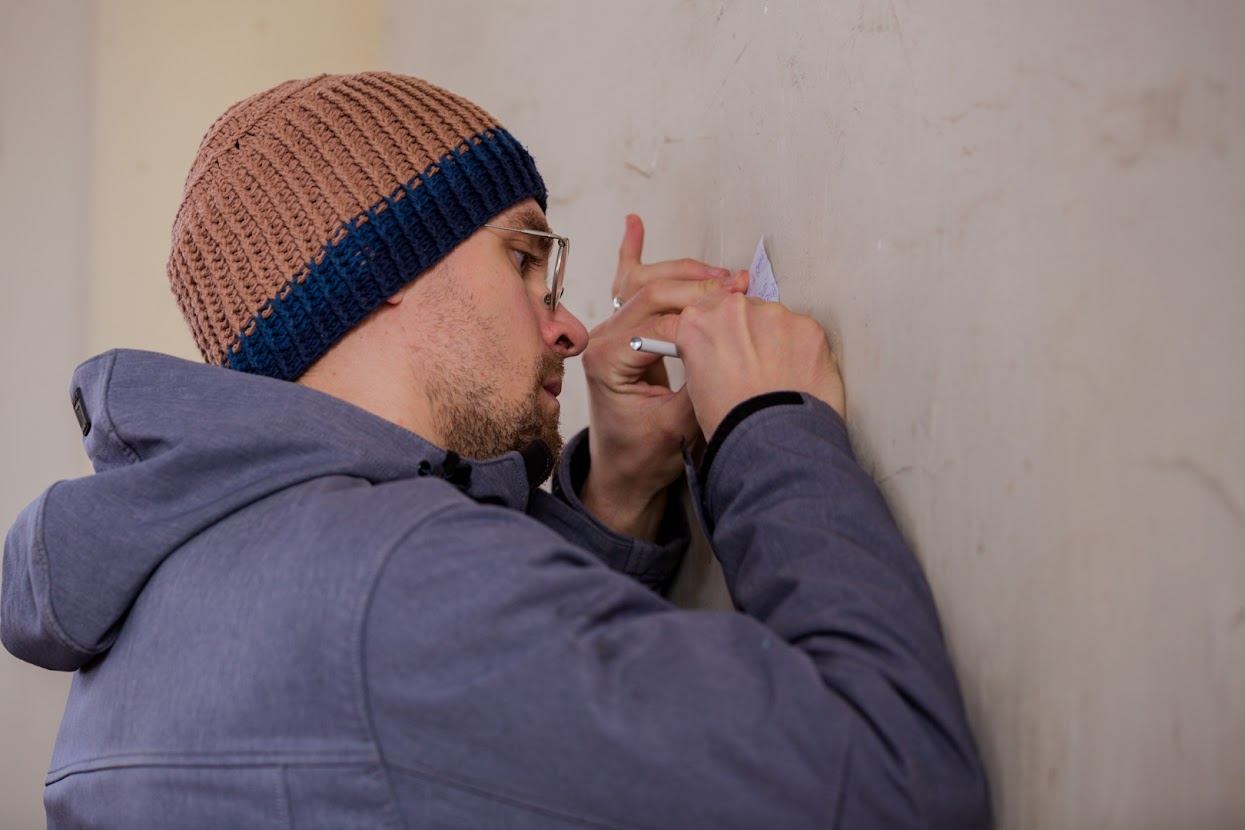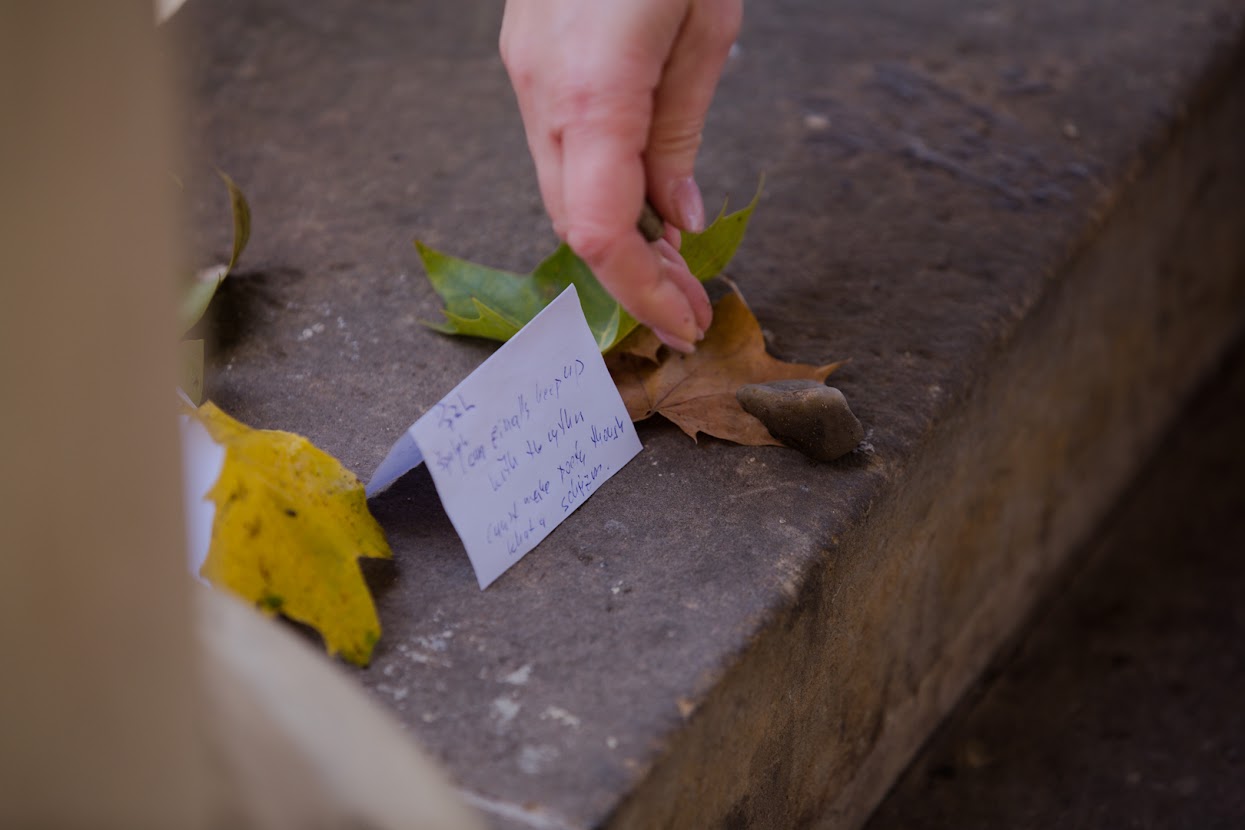My interdisciplinary research, on the border between theatrology and environmental humanities, brings a unique view of walking and its connection with singing and physical theatre in the urban and natural landscape.
The phenomenon of walking can be examined from different angles – from Thoreau’s transcendentalist views (1862) to Horvath’s and Szakolczai’s sociology of walking (2017). Our perception of the outer environment reflects the inner pictures we form based on our experience and a priori forms. The Czech geologist and philosopher Václav Cílek sets out the concept of the inner landscape as influenced by the spirit of the outer one (2002). The more disorderly the outer environment, the more important our inner landscape. The era of postglobalization accelerates the shift to speed, which has been reflected in art since the 1960s. The environmental artist Robert Smithson referred to perceptive changes in the outer environment in his concept of ‘non-site’ (1968), later brought into the field of anthropology by Marc Augé’s theory of ‘non-places’ (1995). Whereas Smithson highlights the disproportionality of sensual perception of space in the context of spatial transformation, and his concept of ‘non-sites’ relativizes the perception of the temporality of peripheral terrain vague, Augé pinpoints ‘non-places’ as depersonalized spatial phenomena like supermarkets, airports, hotels, or motorways with no local identity. Smithson’s concept, arising from his experience of landscape in post-war America, matches Augé’s theses on super-modernity in the late capitalist era.
The character of walking, a process related to the natural flow of time, can bring many benefits to our awareness of the inner landscape. Artistic and performative involvement in the process of walking can enrich both the performers and the audience, raising alertness and awareness of the deep inner values of each person. Some of these moments and experiences will be reflected in an auto-ethnographic report from walking theatre events with the Polish theatre company Węgajty on the Polish-Lithuanian border (Alilujki, 2009, 2011) and with Saba Krasoczko and Mieczysław Litwiński in the Prokopské valley in Prague (Edward Stachura’s Missa pagana, 2014).
Alžběta Trojanová graduated from Masaryk University with a Master’s degree in Environmental Studies. She is currently a PhD student at the Academy of Performing Arts in Prague, studying the theory and practice of theatrical art and carrying out arts-based research on walking as a medium in environmental theatre. She has been a member of the alternative physical theatre group “Alternativní pohybová scéna Propast” since the 1990s and has worked with the Polish theatre company Węgajty and the Czech theatre company “Teď, nádech a leť”. She performs vocal and instrumental arrangements of early and folk music on her Celtic harp. She has worked as a teacher and educator in NGOs focused on environmental education as well as in Waldorf schools.
